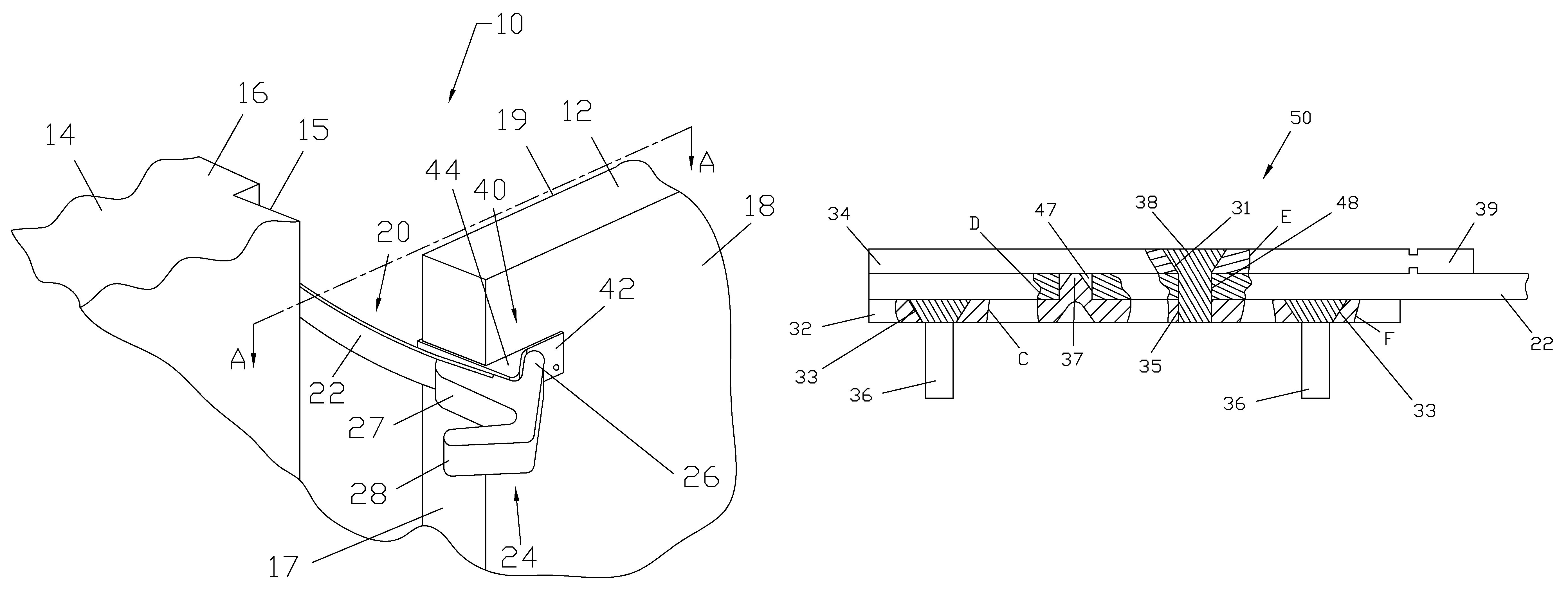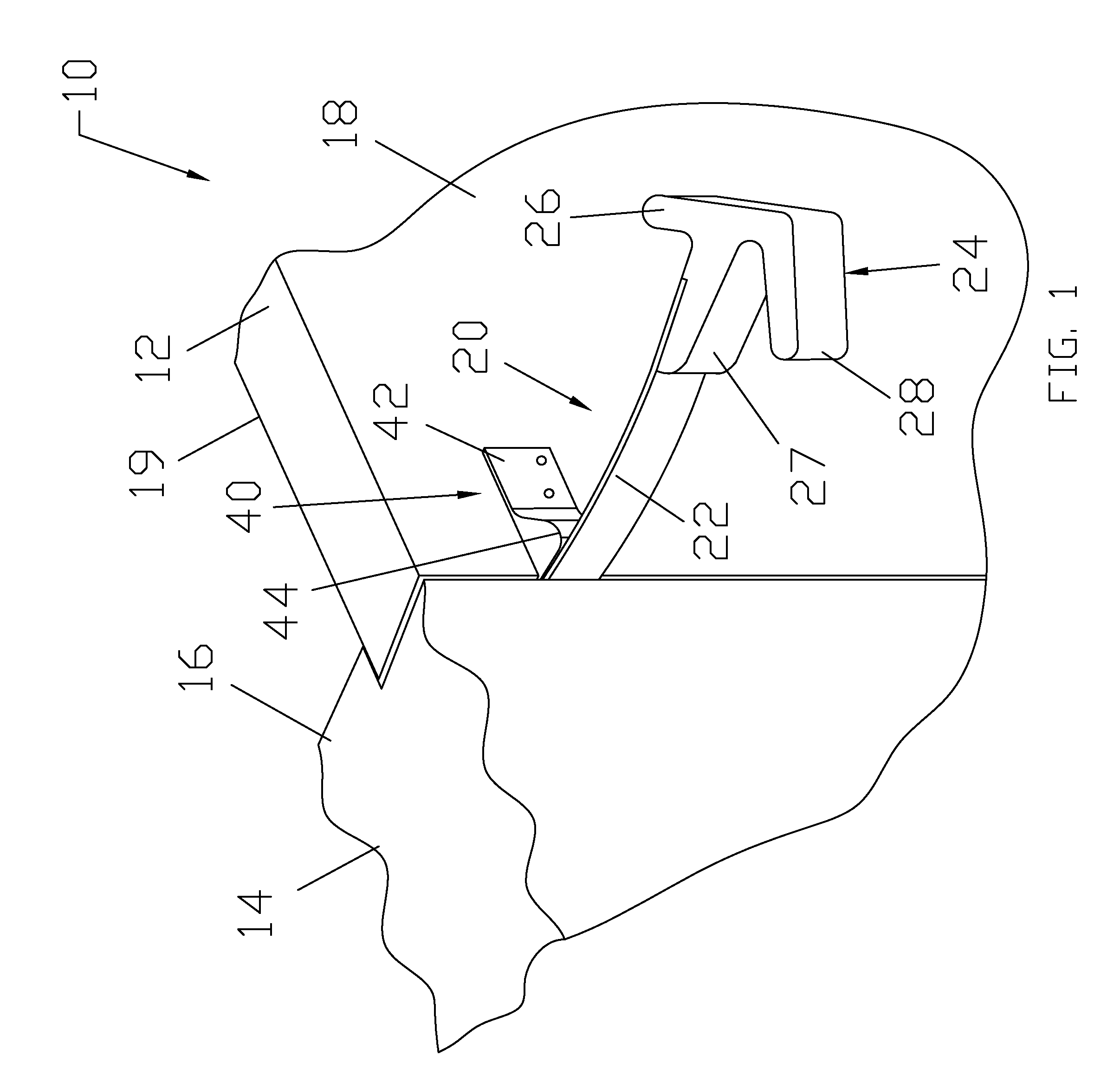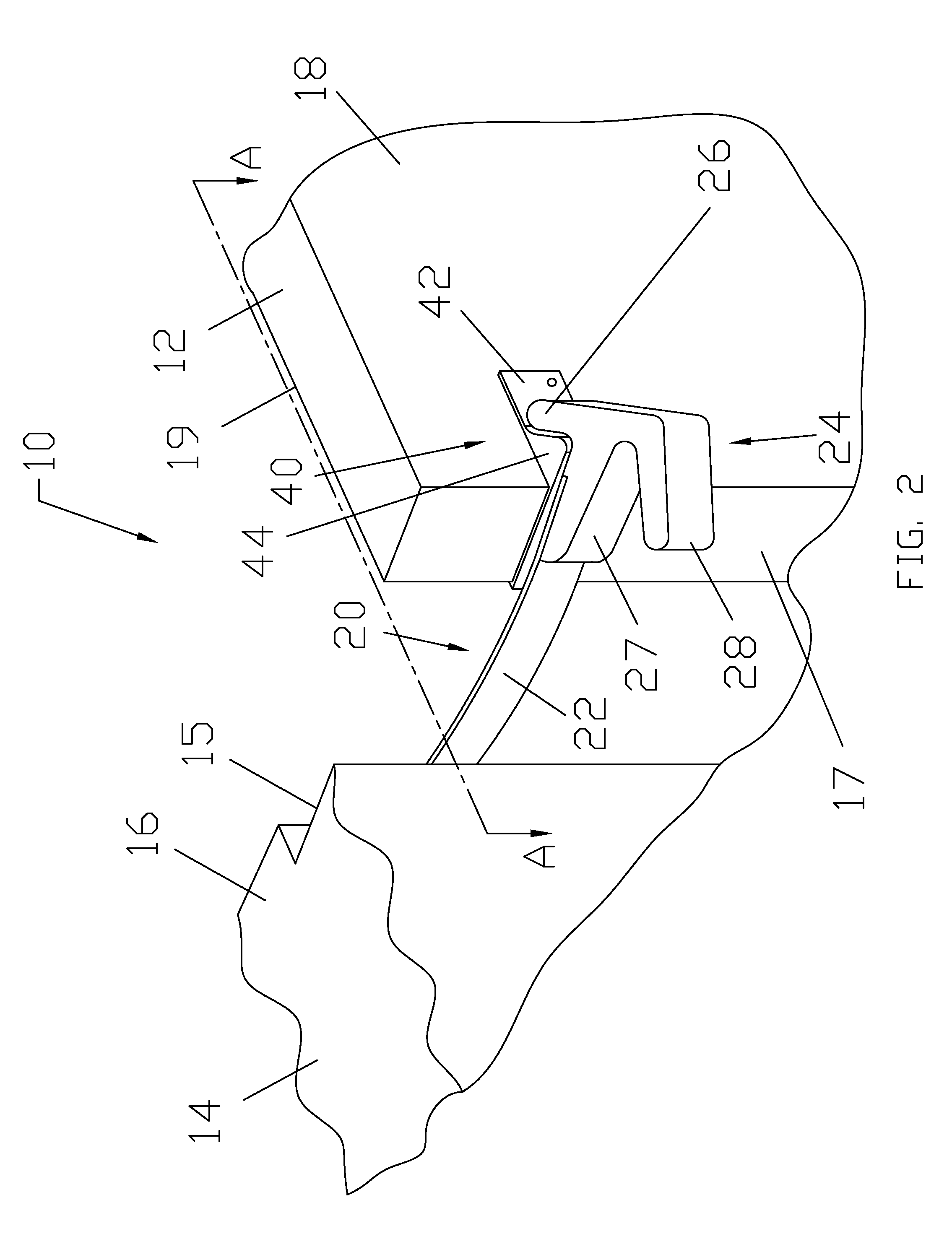Safety latch apparatus
a safety latch and apparatus technology, applied in the field of safety latches, can solve the problems of many access limiting devices becoming a hassle for adults to operate, reducing the usefulness of children and pets passing through the door, and reducing the effectiveness of latching functions, so as to achieve the effect of effectively preventing the latching function, easy and quick disengagement, and preventing the effect of latching
- Summary
- Abstract
- Description
- Claims
- Application Information
AI Technical Summary
Benefits of technology
Problems solved by technology
Method used
Image
Examples
Embodiment Construction
[0033]As discussed above, embodiments of the present invention relate to a safety latch apparatus. Various embodiments of the invention are shown throughout the figures. The figures include common elements in different structural configurations. Common elements are designated with a common base numeral.
[0034]Referring generally to FIGS. 1-5, a safety latch apparatus 10 is depicted for maintaining a swinging door 12 in a substantially closed position relative to a door frame 14, wherein said safety latch apparatus 10 comprises a latching assembly 20 and a receiving assembly 40. Maintaining a swinging door 12 in a substantially closed position may be facilitated by engagement of said latching assembly 20 and said receiving assembly 40. While a swinging door 12 is depicted in the drawings, it is contemplated that the safety latch apparatus 10 may be modified to function on any opening assembly comprising a fixed position member and a movable member. Opening assemblies may include gates...
PUM
 Login to View More
Login to View More Abstract
Description
Claims
Application Information
 Login to View More
Login to View More - R&D
- Intellectual Property
- Life Sciences
- Materials
- Tech Scout
- Unparalleled Data Quality
- Higher Quality Content
- 60% Fewer Hallucinations
Browse by: Latest US Patents, China's latest patents, Technical Efficacy Thesaurus, Application Domain, Technology Topic, Popular Technical Reports.
© 2025 PatSnap. All rights reserved.Legal|Privacy policy|Modern Slavery Act Transparency Statement|Sitemap|About US| Contact US: help@patsnap.com



